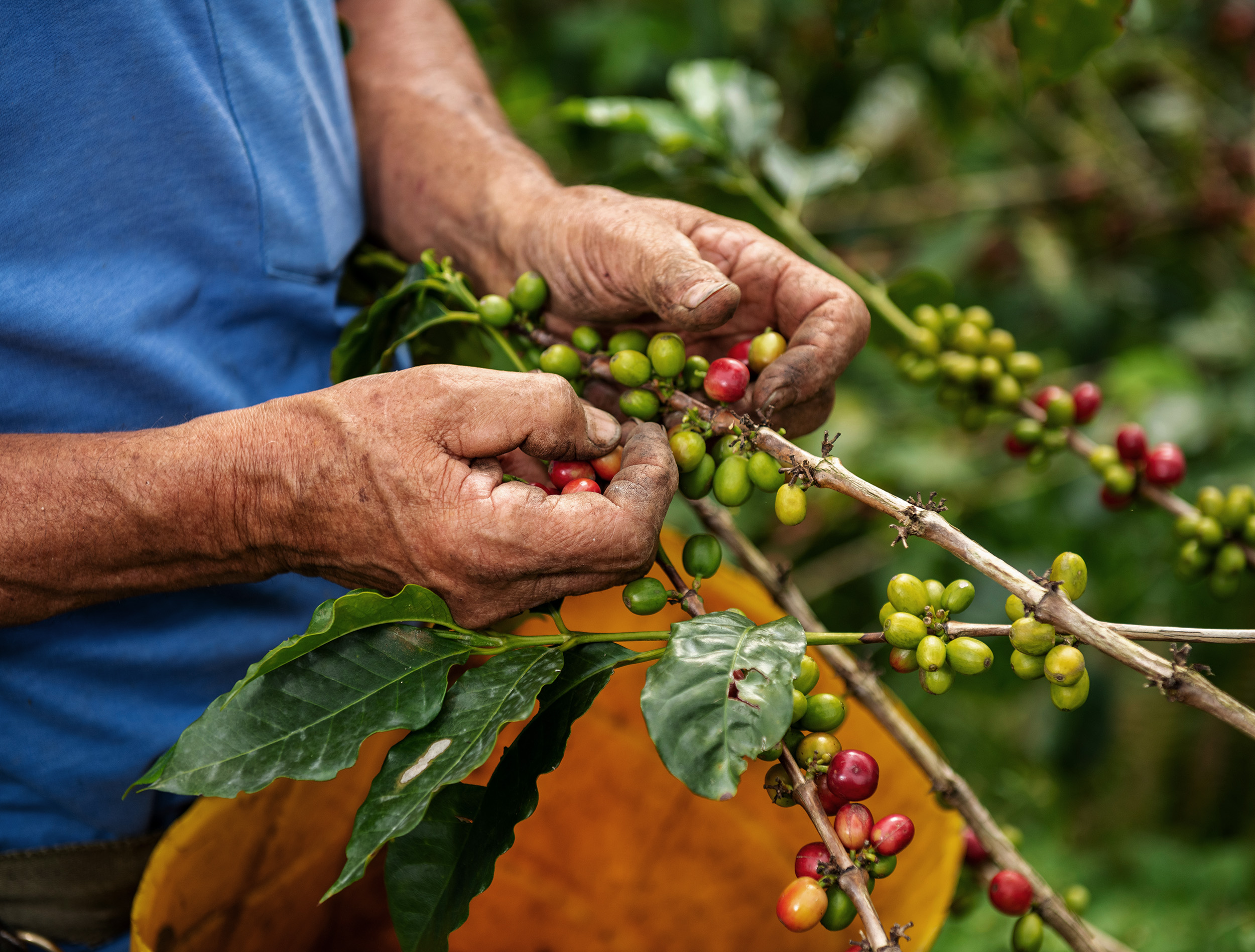Virtually all the coffee in Colombia is selectively hand-picked. On the smallest farms, families harvest their own coffee, and they may help out their neighbours and receive help in return during peak season. Larger farms rely on an army of temporary workers, many of whom travel from place to place, following the harvest season.
 Coffee pickers select ripe cherries and collect them in a basket tied at their waist.
Coffee pickers select ripe cherries and collect them in a basket tied at their waist.
Most coffee pickers are ‘casual workers’, hired for days or weeks at a time on the basis of a verbal agreement and paid in cash. Coffee growers or their farm supervisors commonly drive pickup trucks into the nearest town to recruit workers and return to the farm with the pickers they’ve hired riding in the back.
The farmer may provide simple accommodations and food, but as casual workers the pickers receive no healthcare, social security, or pensions, and no union represents them. Pickers begin work at 5 or 6 a.m. and commonly work for more than 10 hours, five or six days per week (van der Wal et al 2016). The work is physically demanding, placing severe strain on muscles in the back, knees, feet, and wrists (Peláez and Quintana 2020), and injuries and accidents are common.
Pickers are generally paid by the kilogram of cherry harvested rather than for the time they work. The expectation of paying per kilogram of cherry presents a challenge to specialty coffee producers, who must train and incentivise pickers to collect only ripe cherries.
During the peak season, an experienced picker can earn as much as two to three times the Colombian minimum wage on some days (Rueda 2020), but the availability of such lucrative work is unpredictable. On other days, the take-home pay will be much lower, and a survey found that most coffee pickers earn less than the minimum wage, on average, over the course of the year (van der Wal et al 2016).